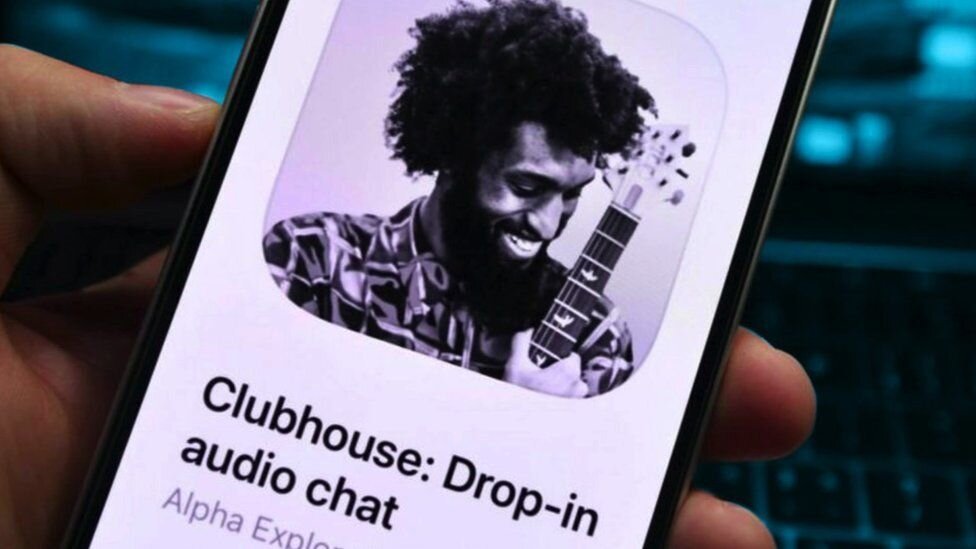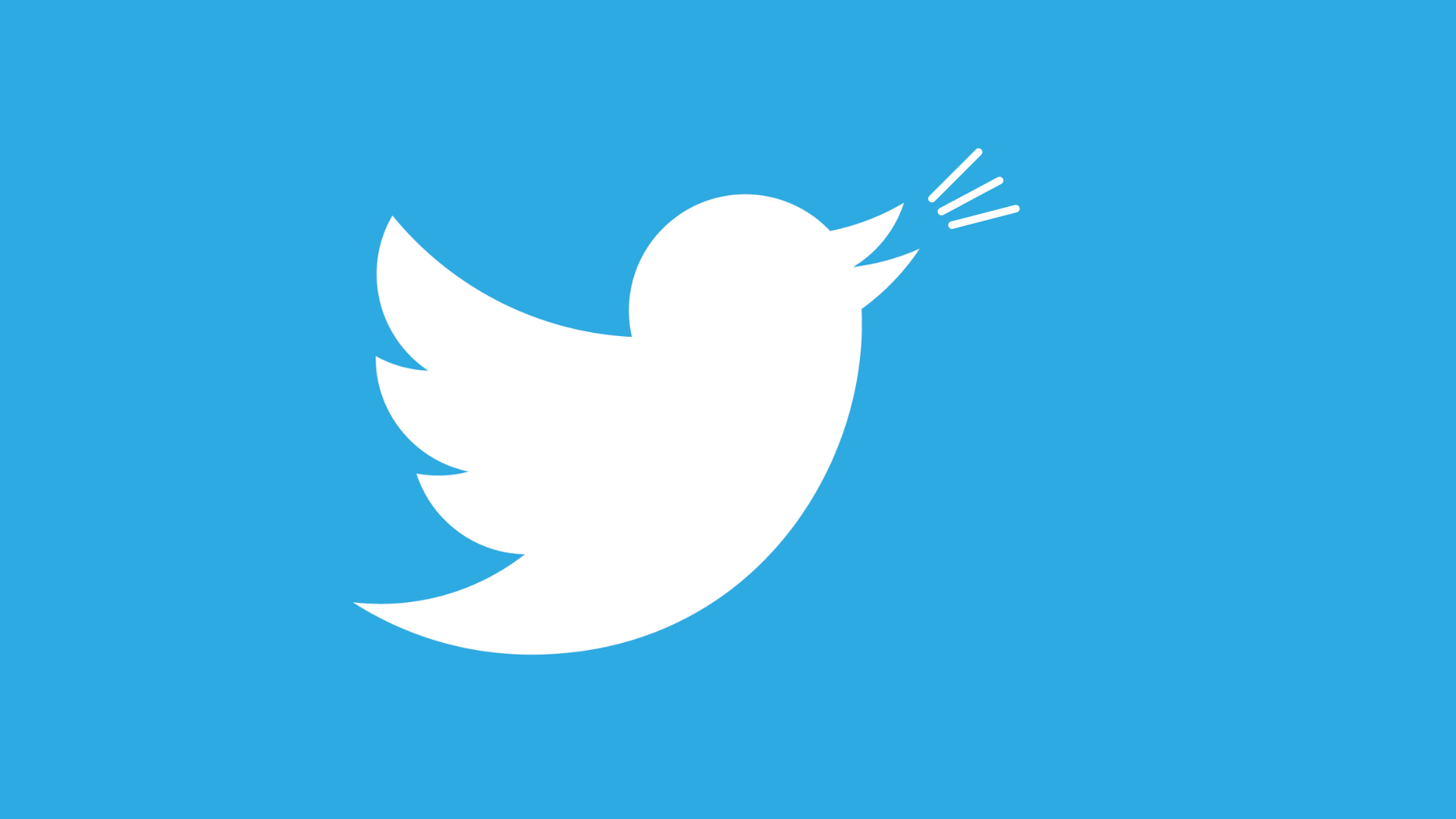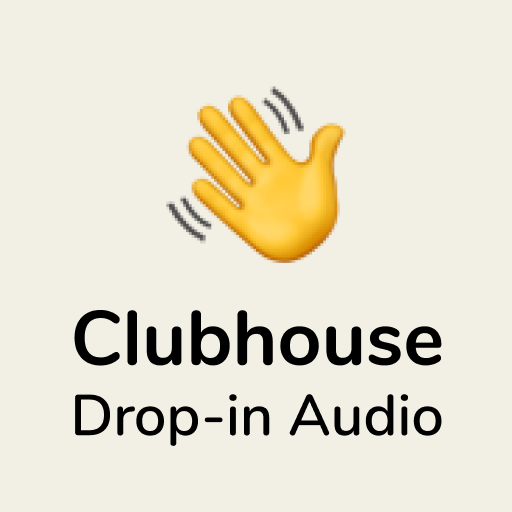Is drop-in audio the future of social media?
Clubhouse is the buzz word on everyone’s lips and people are looking everywhere for an invite. TK Princewill, marketer, freelance tech writer and community builder, breaks down what drop-in audio is for us and takes a look at Clubhouse, Twitter Spaces, Soapbox and Leher.
Since the dawn of social media, text, photo, and video-based platforms have defined the landscape. This decade, we will see the explosion of drop-in audio platforms, this new feature changes the way we communicate and connect with people all over the world.
Before we get into the juicy details, let's talk about the concept of drop-in audio — I know it still sounds foreign to some people.
What is Drop-in Audio?
Drop-in audio is the new sensation on the internet. It is a temporary audio chat room that users can drop in and out of.
It feels like a podcast, but it’s even better because you can interact with the other people you’re connected to in real-time, so it’s like you’re the podcast host or a guest on a podcast.
Drop-in audio brings a new dimension to social media. With the effects of the pandemic and lockdown, a lot of people already have Zoom fatigue and are tired of sitting in front of a screen to interact with the people they love.
This new paradigm-shifting technology will make the world a smaller global community.
It bridges the distance and allows you to connect with people halfway across the world on different levels without worrying about what shirt to wear or if your hair looks nice.
Now that we have refreshed the room on the concept of drop-in audio, let’s talk about some of the popular and the not-so-popular platforms with this feature, we’ll start with the first and most popular: Clubhouse.
Clubhouse
Clubhouse is a drop-in audio-only social media platform that has been making the world go crazy… since 2020.
It’s also invite-only, which means an already existing user has to invite you for you to be able to get into a chat room and experience the drop-in audio goodness or get on the waitlist —for now, the app is built on exclusivity.
Don’t get too excited if you’re an Android user or an old iPhone user, Clubhouse is only available on iOS 13 or later, but they are working to get it on Android soon and open it up to the public.
Each Clubhouse room has a stage where moderators and speakers are, and the floor for listeners, when you join a room, you’ll have to request to speak by tapping on a hand icon, then you can be allowed on stage.
At the moment, Clubhouse allows an unlimited amount of speakers on stage but only 5,000 people are allowed in a room.
“CH” (as gen Z like to call it) was launched in March 2020 by Silicon Valley entrepreneur Paul Davison and ex-Google employee Rohan Seth.
They met in 2011 and bonded over their mutual interest in building a social experience platform that deepened connections with the power of the human voice.
After various failed projects together, Clubhouse was created and has been a success, with over 180 investors, the company has already hit a $ 1B valuation in its last funding round.
A lot of influential people have since joined the platform, Elon Musk, Bill Gates, Mark Zuckerberg, Oprah Winfrey are just a few of the public figures who use the app to join discussion panels and connect with their audience.
Twitter Spaces
Twitter Spaces launched last December, it is the new drop-in audio feature embedded in the Twitter app.
Shortly after Twitter launched Fleets, the app’s version of stories comes Twitter Spaces, a feature similar to Club House.
The new and exciting feature allows you to have real-time audio conversations in an ephemeral room called Space, a Space is started by long-pressing the compose button and hitting on the dots below the GIF icon.
If you don’t have it yet, that’s okay. Twitter Spaces is still in beta testing mode and was only rolled out for few users on the iOS platform — for now, Android users can’t host Spaces, but they can follow iOS users with the feature and hop on their Space or the Spaces they join.
Available Spaces appear on your Fleet bar. It beams above your timeline like the star that led the wise men — you can’t miss it.
Only ten speakers are allowed on stage while there’s an unlimited amount of listeners allowed to join a space.
Beta testers are allowed to give feedback to the Twitter team for continuous improvement.
I have been fortunate to host Twitter Spaces. The first thing you notice about Spaces is how crisp the sound is, it feels like you’re having a living-room conversation.
Unlike Clubhouse, which is audio-only, Twitter Spaces has built-in emojis that can be used to react to conversations in a Space.
Twitter is still a micro-blogging platform, and it's easy for users to tweet about their Spaces experience. I noticed Clubhouse users also use Twitter for this — what happens now that Twitter has it all in one place?
Soapbox
Soapbox is a drop-in audio social platform that launched a few months ago, it's still in beta but has been getting good reviews from users about its simple but great UI.
Although it’s similar to Clubhouse, Soapbox founder Dean Eigenmann has stated that he wants the app to feel like your favorite bar, unlike Clubhouse, which feels like a conference.
On Soapbox, your experience is personalized with the groups you join.
It is only available on iOS, but unlike Clubhouse, rooms are open by default, or private for more intimate conversations.
Leher
Leher is an Indian-based invite-only social media platform that supports real-time audio and video conversations.
Unlike the other platforms, Leher is available to both Android and iOS — this gives Leher the advantage in the Indian market, which is dominated by Android users.
Leher was founded by entrepreneur Vikas Malpan and ex-VP of technology at Goldman Sachs, Atul Jaju.
Leher launched in 2018 as a video-only platform but during the lockdown, it added its audio features and has seen a boom in active users since then.
Drop-in Audio is shifting the paradigm
Drop-in audio technology is an innovation that will cause a shift in the way we interact and communicate.
In my experience using drop-in audio technology, the attempt to make the world a very small community is beautiful. You can connect with people on a fundamental human level based on shared interests or desires.
As we continue to explore the depths of this new social media dimension, more platforms will adopt this feature in the future.
Facebook is already working on its drop-in audio feature.
Billionaire Mark Cuban is also set to release his Fireside app that seeks to expand the possibilities of drop-in audio technology.
Other tech giants like LinkedIn, Slack, Spotify and even Discord are set to release their drop in audio features in the coming months.
Fundamentally, drop-in audio feels authentic and requires less commitment. You could be in bed having a conversation with people halfway across the world, but that’s not the only benefit of drop-in audio.
Drop-in audio bridges the gap between people in different parts of the world to connect on a level that is more intimate than text and less pressure than video. The possibilities for this new innovation are endless.
Think about what this new paradigm-shifting technology can do for therapy, counselling, marketing, education, and even the creator economy.
Drop-in audio is the future of social media, and I can’t wait for more people to experience it.
If you enjoyed reading this as much as I enjoyed writing it, connect with me on LinkedIn.
Post written by TK Princewill, Marketer, freelance tech writer and community builder.








